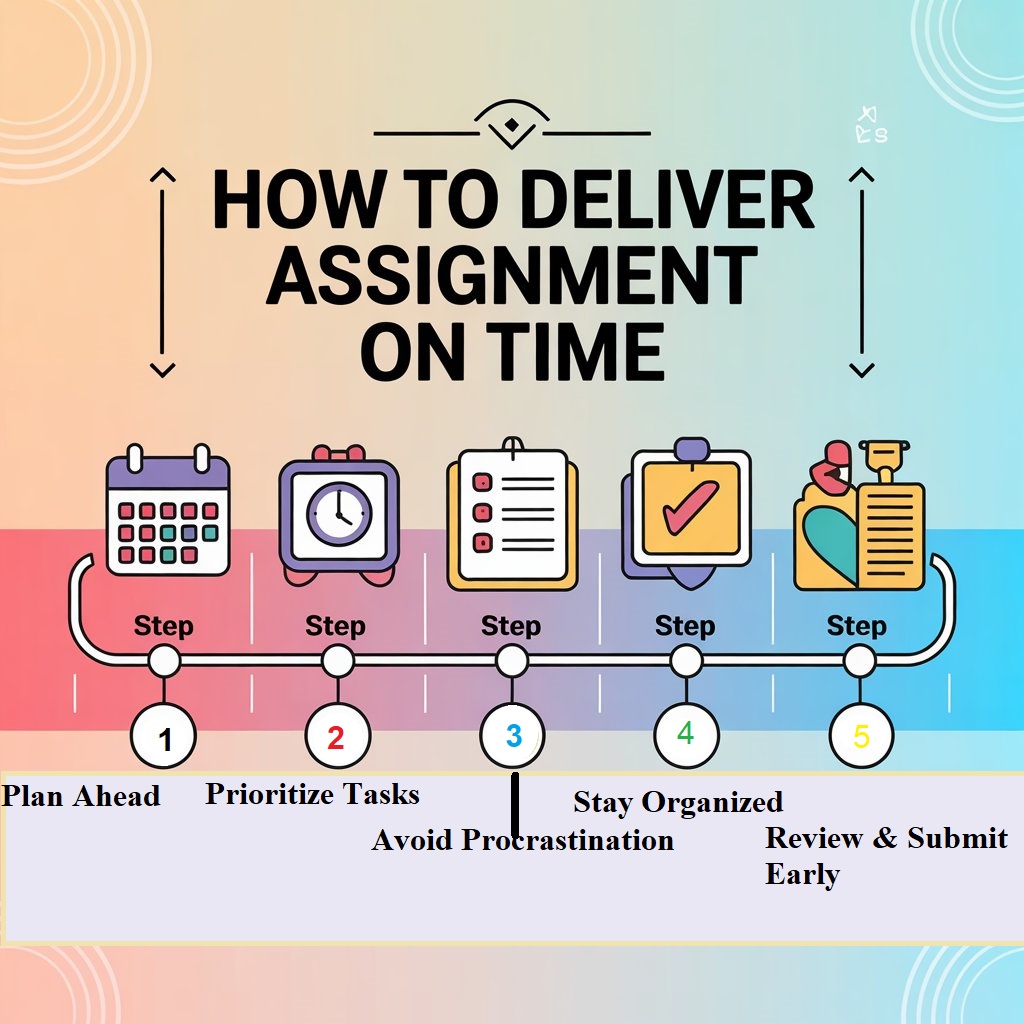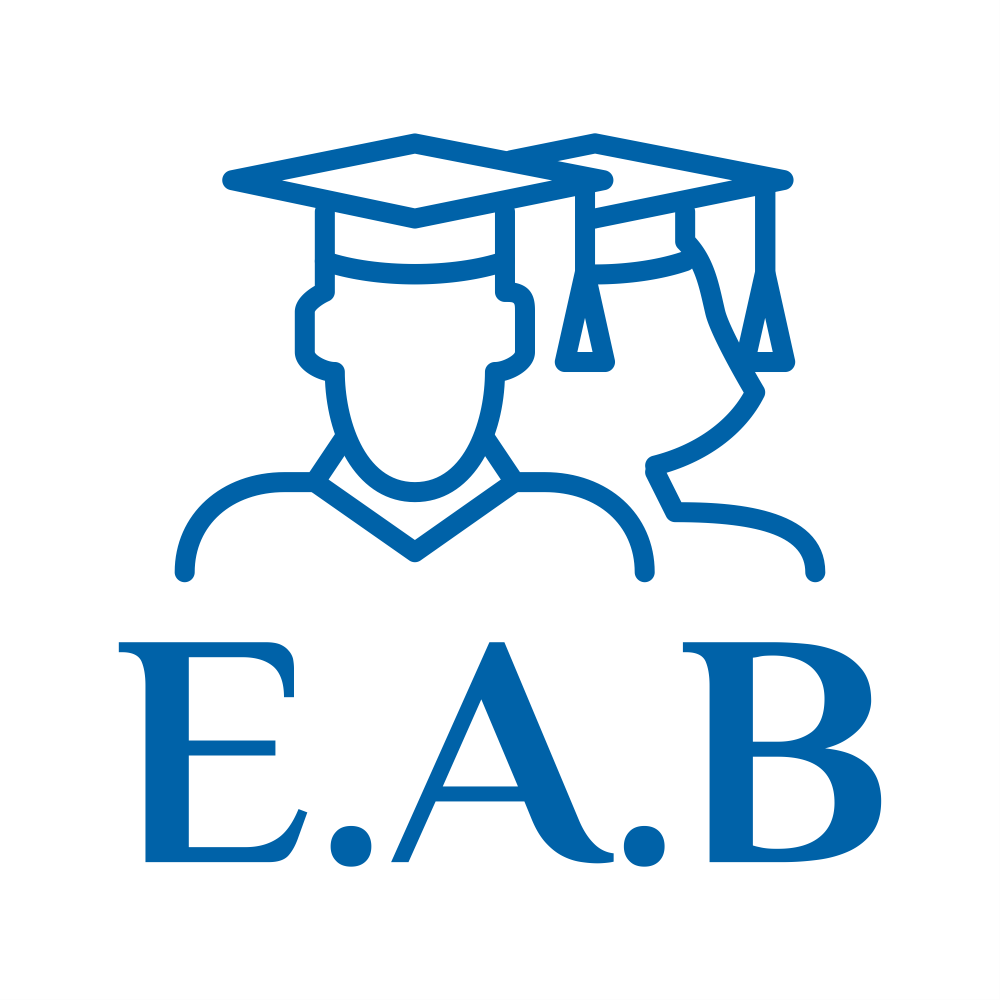Submitting assignments on time is a crucial indicator of discipline, dedication, and effective time management. As students manage coursework, projects, and exams, mastering the art of timely submission becomes essential for academic success and building professional habits.
Meeting deadlines reflect reliability and responsibility, which are highly valued in educational and professional settings. The strategies outlined here will help students meet deadlines, improve work quality, and develop lifelong organizational skills.

1. Planning for Success
Timely assignment submission begins with meticulous planning. Research suggests that students who plan their tasks effectively experience lower stress levels and achieve better academic outcomes. Students can efficiently manage their time and workload by implementing structured planning techniques.
Breaking Down Assignments into Manageable Tasks
Large assignments can feel overwhelming, leading to procrastination. To combat this, breaking them down into smaller tasks can make them more manageable and less intimidating. For example, a research paper can be divided into:
- Research and Data Collection: Gather credible sources, take structured notes, and organize them for easy reference.
- Creating an Outline: Organize key arguments and supporting evidence to make a logical structure for the assignment.
- Drafting Sections: Start with sections that feel easiest to write to build momentum before tackling more complex parts.
- Revising and Proofreading: Edit for clarity, coherence, and grammar while ensuring the argument remains strong and well-supported.
By segmenting assignments into smaller components, students can systematically approach their work, reducing the feeling of being overwhelmed and increasing productivity.
Estimating Time Requirements Realistically
Studies have found that students who set self-imposed deadlines perform better than those who leave tasks to the last minute. To apply this strategy effectively:
- Assess the complexity of the task based on prior experience and available resources.
- Allocate sufficient time for each assignment stage, from research to final edits.
- Build buffer periods to accommodate potential setbacks such as technical issues or additional revisions.
Leveraging Psychological Principles for Planning
Understanding cognitive biases can help students plan more effectively:
- The Zeigarnik Effect: Unfinished tasks create mental tension, keeping them at the forefront of the mind. By starting assignments early, students remain engaged and motivated to complete them.
- Parkinson’s Law states that work expands to fill the available time. Setting earlier personal deadlines helps prevent procrastination and rushed submissions.
- Temporal Discounting: People tend to undervalue future rewards. Creating immediate incentives, such as small rewards for completing stages, encourages steady progress.
Creating a Realistic Timeline with Milestones
A structured timeline helps track progress:
- Week 1: Research and data collection, ensuring relevant and credible sources.
- Week 2: Drafting key sections, focusing on developing strong arguments and logical flow.
- Week 3: First round of revisions, refining structure, and coherence.
- Week 4: Final proofreading, checking citations, formatting, and submitting the assignment.
Using digital tools like Google Calendar, Notion, or Trello can help streamline this process, allowing students to set reminders and adjust deadlines as needed.
2. Setting Priorities
Effective time management starts with setting clear priorities. College students often juggle multiple assignments, exams, and extracurricular commitments, making it essential to prioritize tasks based on urgency, importance, and workload. Students can improve efficiency, reduce stress, and maintain a balanced academic life using structured prioritization techniques.
Identifying Urgent Assignments
Not all tasks require the same level of attention, so prioritizing assignments strategically ensures that critical deadlines are met without last-minute stress. One effective tool for this is Covey’s Time Management Matrix, which categorizes tasks into four quadrants:
-
Urgent & Important (Do Immediately)
-
These tasks have pressing deadlines and a significant impact on academic performance.
-
Examples: An essay due in two days, preparing for a major exam tomorrow, or a critical group project milestone.
-
Strategy: Work on these tasks first to avoid last-minute panic.
-
Necessary but Not Urgent (Plan & Schedule)
-
These crucial long-term tasks require a gradual effort but aren’t immediately due.
-
Examples: Researching for a term paper, preparing for finals, or applying for internships.
-
Strategy: Allocate weekly time to make steady progress and prevent last-minute rushes.
-
Urgent but Not Important (Minimize or Delegate)
-
These tasks demand immediate attention but have little long-term academic value.
-
Examples: Responding to non-essential emails, attending optional meetings, or completing ungraded practice exercises.
-
Strategy: Limit time spent on these or delegate when possible.
-
Neither Urgent nor Important (Eliminate or Postpone)
-
These tasks are distractions that can be avoided or scheduled for leisure time.
-
Examples: Scrolling through social media, watching TV during study hours, or attending unnecessary social events.
-
Strategy: Set boundaries and minimize these activities during peak study times.
Strategically Managing Complex Tasks
Some assignments are more demanding than others, requiring additional time and effort. Tackling these tasks first ensures they receive the necessary focus before moving on to more straightforward tasks.
Practical Prioritization Tips:
-
Use a Task Matrix
-
Employ Time Blocking
-
Dedicate specific time slots for different tasks to maintain structure and prevent distractions.
-
For example, set aside mornings for research-intensive tasks and afternoons for lighter assignments.
-
Delegate When Possible
-
In group projects, assign tasks based on individual strengths to improve efficiency.
-
Use shared platforms like Google Docs or Slack for better collaboration.
-
Regularly Adjust Priorities
-
Deadlines, workload, and unforeseen challenges can shift priorities, so reviewing and updating to-do lists regularly ensures nothing is overlooked.
-
A weekly review can help realign focus and prevent procrastination.
3. Overcoming Procrastination
Procrastination is a common struggle among college students, often leading to stress, rushed work, and lower academic performance. However, by implementing structured techniques, students can improve time management, boost productivity, and enhance the quality of their work. Developing proactive habits, using time management strategies, and leveraging accountability can significantly reduce procrastination.
Starting Assignments Early
One of the most effective ways to combat procrastination is to start assignments well in advance. The benefits of starting early include:
-
Lower Stress Levels
-
Avoiding the last-minute rush prevents anxiety and allows for a more relaxed approach to coursework.
-
Having ample time to complete assignments ensures steady progress rather than cramming everything into a single night.
-
Higher Work Quality
-
Beginning early allows students to create multiple drafts, revise their work, and refine their arguments.
-
Quality improvements come from careful research, thoughtful analysis, and well-structured writing rather than rushed efforts.
-
Better Flexibility
-
Starting early provides a cushion for unexpected challenges, such as additional research needs, technical issues, or other commitments.
-
This flexibility reduces the chances of missing deadlines or turning in incomplete work.
-
Opportunities for Feedback
-
With extra time, students can seek input from professors, teaching assistants, or peers, helping them improve their work before submission.
-
Constructive feedback allows revisions that enhance clarity, structure, and content quality.
Utilizing the Pomodoro Technique
The Pomodoro Technique, developed in the 1980s by Francesco Cirillo, is a powerful time management tool that helps students focus and avoid distractions. This method involves:
-
Working in 25-minute intervals (“Pomodoros”)
-
Students commit to uninterrupted study sessions of 25 minutes, focusing entirely on the task at hand.
-
The short time frame prevents fatigue and makes starting tasks feel less overwhelming.
-
Taking 5-minute breaks after each Pomodoro
-
Taking a more extended break after four Pomodoros (15-30 minutes)
This technique is particularly effective for students who struggle with maintaining concentration, as it structures work into manageable chunks and encourages regular rest.
Leveraging Accountability Methods
Holding oneself accountable is crucial in overcoming procrastination. Here are some effective accountability strategies:
-
Study Groups
-
Collaborating with peers creates a sense of responsibility to stay on track and complete assignments on time.
-
Study groups provide motivation, shared knowledge, and a structured environment for focused learning.
-
Explaining concepts to others reinforces understanding and retention.
-
Commitment Contracts
-
Setting personal deadlines (earlier than official due dates) helps students manage their time more effectively.
-
Rewarding oneself for meeting deadlines, such as a break, a small treat, or leisure time—creates positive reinforcement.
-
Some students benefit from public accountability, such as telling friends or family about their goals, making them more likely to follow through.
-
Habit Tracking Apps
-
Digital tools like Habitica, Todoist, or Trello help students set goals, track progress, and establish productive habits.
-
These apps provide visual progress tracking, reminders, and gamification elements, rewarding task completion.
Read on How to Write Critical Thinking Essay
4. Structuring a Work Schedule
Having a well-structured work schedule is essential for academic success. Students with regular study routines tend to outperform those with inconsistent schedules, as structured study habits enhance focus, retention, and productivity. Students can optimize their study time and achieve better results by establishing a dedicated study plan, minimizing distractions, and incorporating active learning techniques.
Allocating Dedicated Study Time
-
Fixed Study Hours
-
Setting a consistent study schedule, such as studying simultaneously each day, helps reinforce discipline and create a productive habit.
-
Two-hour study blocks with short breaks (e.g., the Pomodoro Technique – 25-minute study sessions followed by 5-minute breaks) can enhance concentration and prevent burnout.
-
Reviewing complex subjects during peak concentration periods (e.g., morning for some, evening for others) maximizes learning efficiency.
-
Environment Optimization
-
Choosing a quiet, organized, comfortable study space can improve focus and reduce distractions.
-
Using noise-cancelling headphones or instrumental music can help block out background noise.
-
Keeping all necessary materials (laptop, textbooks, notes) within reach prevents unnecessary interruptions.
-
Batching Similar Tasks
-
Grouping similar tasks can improve efficiency and reduce cognitive overload.
-
For example, dedicating specific time blocks to research-heavy assignments, note-taking, or problem-solving exercises helps maintain workflow and mental clarity.
-
Breaking down large projects into smaller, manageable tasks prevents procrastination and makes studying less overwhelming.
Minimizing Distractions
-
Turning Off Notifications
-
Constant digital interruptions from social media, messages, and emails can significantly hinder focus.
-
Enabling “Do Not Disturb” mode or putting the phone on silent during study sessions helps maintain concentration.
-
Using Focus Apps
-
Productivity tools like Forest, Cold Turkey, and Freedom block distracting websites and social media to keep students on task.
-
Time-management apps like Trello or Notion can help organize study plans and assignments.
-
Setting Clear Boundaries
Using Active Learning Techniques
-
Feynman Technique
-
This method involves teaching a concept to someone else (or explaining it simply), reinforcing understanding, and identifying knowledge gaps.
-
Writing down explanations as if teaching a beginner can highlight areas that need further clarification.
-
Spaced Repetition
-
Reviewing material at increasing intervals over time improves long-term retention.
-
Using flashcard apps like Anki or Quizlet helps reinforce key concepts through repeated exposure.
-
Regularly revisiting notes instead of cramming before exams improves recall and comprehension.
-
Mind Mapping
-
Creating visual diagrams that link key concepts can enhance understanding and memory.
-
Mapping out complex topics helps see connections between ideas, making it easier to recall information during exams.
-
Tools like XMind or MindMeister can assist in creating effective digital mind maps.
Read also on How to Choose the Perfect College Course for Lifelong Success!
5. Seeking Support When Needed
Navigating academic life can be challenging, but seeking support from the right resources can significantly impact your success and well-being. Available academic and mental health resources can help you stay on track, manage stress, and achieve your educational goals.
Utilizing Academic Resources
-
Professors and Teaching Assistants (TAs)
-
Professors and TAs are valuable resources for gaining deeper insights into course material and clarifying assignment expectations.
-
Attending office hours can provide one-on-one support, allowing you to ask questions about lectures, assignments, or exams.
-
Engaging with faculty can also open doors to research opportunities, mentorship, and academic networking.
-
Tutoring Services
-
Many universities offer free or low-cost tutoring services to help students in complex subjects like math, science, and writing.
-
Peer tutoring allows students to learn from classmates who have excelled in the course, providing a relatable learning experience.
-
Writing centers can assist with essays and research papers and improve writing skills across various disciplines.
-
Study Groups and Peer Support
-
Joining or forming study groups can provide collaborative learning opportunities and different perspectives on course materials.
-
Group discussions can enhance problem-solving skills and reinforce understanding through peer-to-peer teaching.
-
Online discussion forums or university study groups can also provide support outside of scheduled classes.
Mental Health Resources
-
Counseling and Psychological Services
-
Universities typically provide counseling services to help students cope with stress, anxiety, depression, and other mental health concerns.
-
Seeking professional support can help manage academic pressure, personal issues, and social challenges.
-
Some institutions offer group therapy, mindfulness sessions, or workshops on stress management and resilience.
-
Wellness Programs and Stress-Relief Activities
-
Many campuses offer wellness programs, including meditation, yoga, and fitness classes, to help students maintain mental and physical health.
-
Taking advantage of campus recreation centers, student clubs, and extracurricular activities can help students balance academics and personal life.
-
Academic Advisors and Career Counseling
-
Academic advisors can help with course selection, degree planning, and strategies for academic success.
-
Career counseling services can assist with résumé building, internship opportunities, and job placement, ensuring students are prepared for life beyond graduation.
Final thought
Submitting assignments on time is a fundamental skill that promotes discipline, responsibility, and academic success. Students can enhance their time management and work quality by implementing effective planning techniques, prioritizing tasks strategically, and overcoming procrastination. Structuring a well-balanced study schedule and leveraging academic support systems contribute to consistent performance and reduced stress.
Submitting assignments promptly improves academic achievements and instills professional habits that are invaluable in future careers. By adopting these strategies, students can navigate their coursework efficiently, meet deadlines confidently, and set the foundation for long-term success.









 Evan John
Evan John